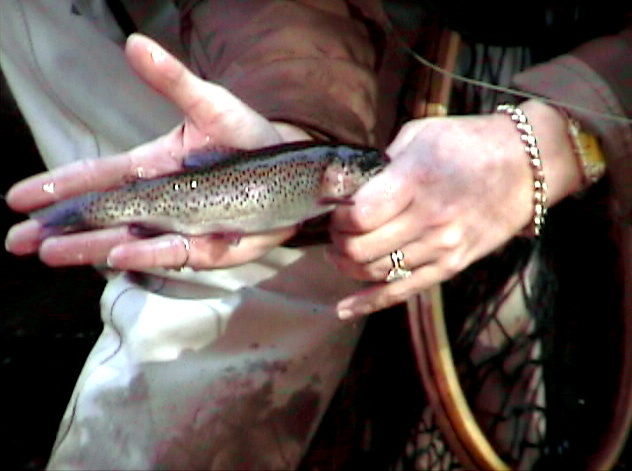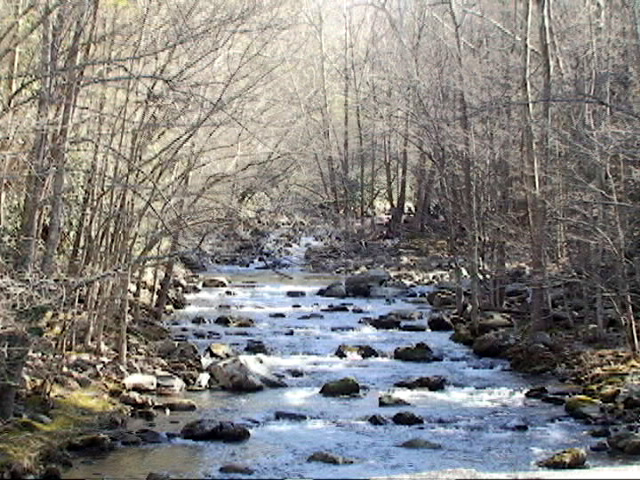
seek areas of slow water. The
slowest water is usually, but not
always, near the bottom of the
stream.
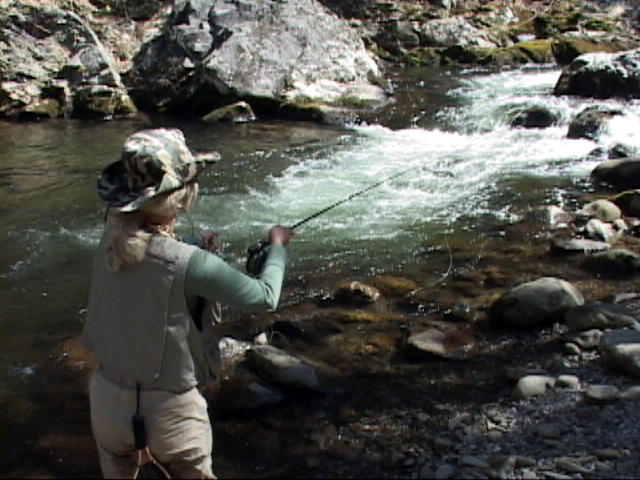
will want to get your fly in the
seams where the fast water
meets the slow water and down
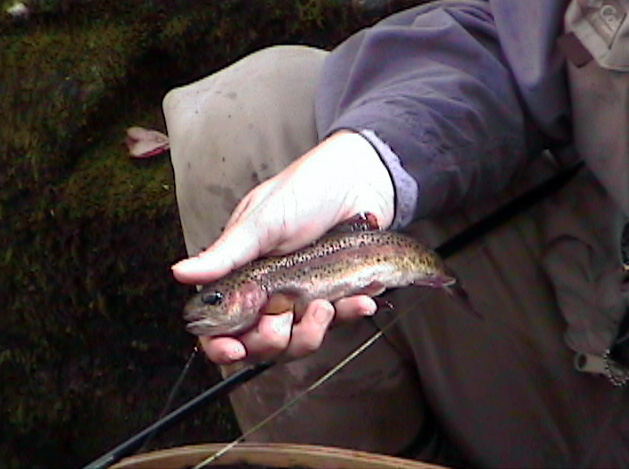
water will catch fish during the
winter if you can find where the
fish are holding.
Many anglers, especially those new to the area, want specific suggestions on where they should fish. The following is a month by month list of suggestions as to where you should fish in Great Smoky Mountains National Park. Keep in mind that you can catch trout in any of the streams in the park. Our stream section provides a lot of information about each of the major streams. This is just a short cut list of suggested streams and areas of the streams for various times of the year round season.
January:
As you probably know, January is usually the coldest month of the year. Water temperatures will generally range between 32 and 50 degrees. The average would probably be close to 40 degrees. The key to catching trout is to pick the warm days and warmest time of the day, which is usually from 1:00 PM until 3:00 PM. Upper Abrams Creek would be the prime choice because part of the water comes from springs. On the coldest days the water is usually is around 40 degrees.
February:
The first part of February, I would suggest the same stream (Abrams) listed for January. If the weather begins to warm (usually past mid February), I would still suggest the same stream but add to it the following: The larger streams at the lowest elevations in the park, except the lower Little River below Meggs Falls. That section of Little River inside the park near Townsend is more suited for smallmouth bass. Avoid water at mid to high elevations.
On the Tennessee side of the park Little Pigeon River near Gatlinburg, and Little River in the Metcalf Bottoms area. On the North Carolina Side, I would suggest the lower end of Hazel Creek (flows into Fontana Lake), Deep Creek near Bryson City, and the Oconaluftee River near Cherokee.
March:
The month of March kicks off some substantial hatches. Little Black Caddis, Blue Quills and Quill Gordons head the list. I would drop Abrams (not because it still isn’t good) and keep the streams listed above but I would extend the areas of them upstream for approximately 500 to 1000 feet of elevation change. In Little River from Metcalf Bottoms to Long Arm Bridge. I would add the lower part of Middle Prong of Little River to the list, along the paved section of the road. On the Little Pigeon, fish between the park entrance at Gatlinburg up to the Chimneys Picnic area. You could fish a couple of miles up Hazel Creek, add a couple of miles to Big Creek, and fish as high as Bradley Fork Creek confluence on the Oconaluftee River.
Copyright 2011 James Marsh

short water falls. Nymph imitations
presented in deep water areas is
a productive fishing method during
the winter months.
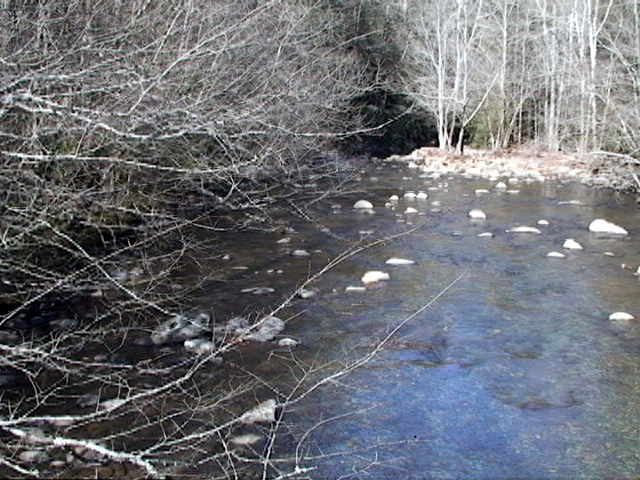
would not be a good choice in cold
water because you would have to
wade to reach any of the deeper
areas of the stream. Wading in
cold water can be dangerous. Try
to find place you can fish deep
water from the banks.
